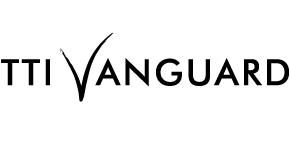TTI/Vanguard Newsletter: January 5, 2024
If you don’t try, you won’t fail, but you also surely won’t succeed. MIT Technology Review put out its list of 2023’s biggest tech failures, most of which we clued you in on in this newsletter, and some of which we had conference sessions on in years past (e.g., Nynke van der Akker, Vienna, Jul 2013, in the case of lab-grown meat; and Richard Turco, Santa Monica, Dec 2007, and Kelly Wanser, San Francisco, Dec 2019, in the case of solar geoengineering). MIT TR soured on not only those, but also on Humane’s Ai Pin, self-driving taxis (notably, Cruise), and the purported LK-99 room-temperature superconductor.
Trying, perhaps failing, adjusting, and trying again are hallmarks of resilience, which is the theme of TTI/Vanguard’s March 2024 conference in Chapel Hill and which will bring members together with past Advisory Board members, current editorial board members, past speakers with something new and notable to share, and a bevy of speakers local to the Research Triangle region. Plus, there will be a full-featured field trip to the University of North Carolina. See the details and agenda, and register today. If you are not a current TTI/Vanguard member and yet wish to attend, contact Kelly Baughman for details on how to make it happen.
North Carolina joins several other coastal states in requiring home sellers to disclose flood risk to prospective buyers. A pair of Resilience speakers, Greg Characklis and Antonia Sebastian, will be sharing their thoughts on assessing, pricing, and mitigating the risk of floods and other natural disasters, while Jeff Warren will speak about infusing evidence-based science into decision-making by even a hyperpartisan legislature. Click here to read the article.
Jean Anne Incorvia (Half Moon Bay, Dec 2023) shared her work on special properties of 2-D materials, in particular one that conducted both electrons and holes. Japanese researchers have developed a planar tungsten telluride material that exhibits both superconducting and quantum spin Hall insulator states. With it, they successfully demonstrated characteristics of a Josephson junction with 2D superconducting leads. Click here to read the article.
When swallowed (by piglets, at least initially), a low-cost, vibrating capsule stimulates the nerve endings in the stomach, tricking the animal to experience a sense of fullness, causing 40% less food consumption compared to other piggies that instead ingested placebos. If this innovation graduates from Harvard’s research labs to commercialization, might taking a pill before every meal become the norm for those seeking to lose weight in a big way, or might the regimen lose its efficacy as the brain learns that such vibrations are unconnected to actual nutritional intake? And how will widespread use impact water treatment facilities and septic systems? Click here to read the article.
Mixing AI and art is nothing new to Alexander Reben (San Francisco, Dec 2019; San Francisco, Dec 2018; Boston, Apr 2014). His upcoming gig is as OpenAI’s first artist in residence. He’s a natural pick, considering that fully four years ago he was experimenting with the use of generative adversarial networks to, variously, photorealistically blend from one face into another, generate fine art-like imagery from noun prompts and then caption the visual output, create album cover-like artwork, and offer up fake names as a TTI/V welcome dinner ice breaker. Reben’s work could well soar to new creative heights with OpenAI’s GPT-4 as its engine. Click here to read the article.
Cory Doctorow (London, Jul 2010) is so pessimistic about the long-term viability of transformer-based AIs that he considers it to be a bubble. His hope is that it will be a useful bubble, like the dot-com bubble, which left behind people with transferable skills and reusable physical and computational resources, yet he is concerned that the detritus will just be so many suckers who sacrificed their money, souls, and time to the sirens singing about easy answers and ultra-efficient businesses. Click here to read the article.
We learn as young children that counting a tree’s rings designates its age, but also the thickness of each ring indicates the relative growth that year and therefore the quality of the growing environment. Well, a core sample of a nearly 200-year-old ponderosa pine growing on Mount Bigelow in Arizona makes plain that the region’s unrelenting heat wave of 2023 made for a truly awful growth year: “The ring for this year is barely a dozen cells wide. It is a silent distress signal sent by one of Earth’s most enduring organisms. A warning written in wood.” In Chapel Hill, speaker Roland Kays will turn his attention not to trees but rather to animals as he shares tools and a perspective for considering how the impacts of climate, disease, and shifting ecosystems affect the planet’s fauna. Click here to read the article.
U.S. Energy Secretary Jennifer Granholm is now confident that harnessing fusion energy here on Earth is not only possible, but probable (Dennis Whyte, San Francisco, Dec 2015; field trip, Boston, Apr 2017). This, following the announcement by Lawrence Livermore National Laboratory that it has replicated ignition three times—at the megajoule level—since its first successful demonstration one year ago. Click here to read the article.
This week featured “public domain day,” and this time it was a doozy. Larry Lessig (Brussels, Jul 2002; Washington, D.C., Sep 1998) railed against the so-called Mickey Mouse Protection Act (more officially known as the Sonny Bono Copyright Extension Act) of 1998, which gave Mickey (and others) an additional quarter-century of copyright protection. Well, that time is up, and the Steamboat Willie version of Mickey is now in the public domain. Like Lessig, many believe that it’s about time! Click here to read the article.
“I only hope that we never lose sight of one thing—that it was all started by a mouse.”—Walt Disney
